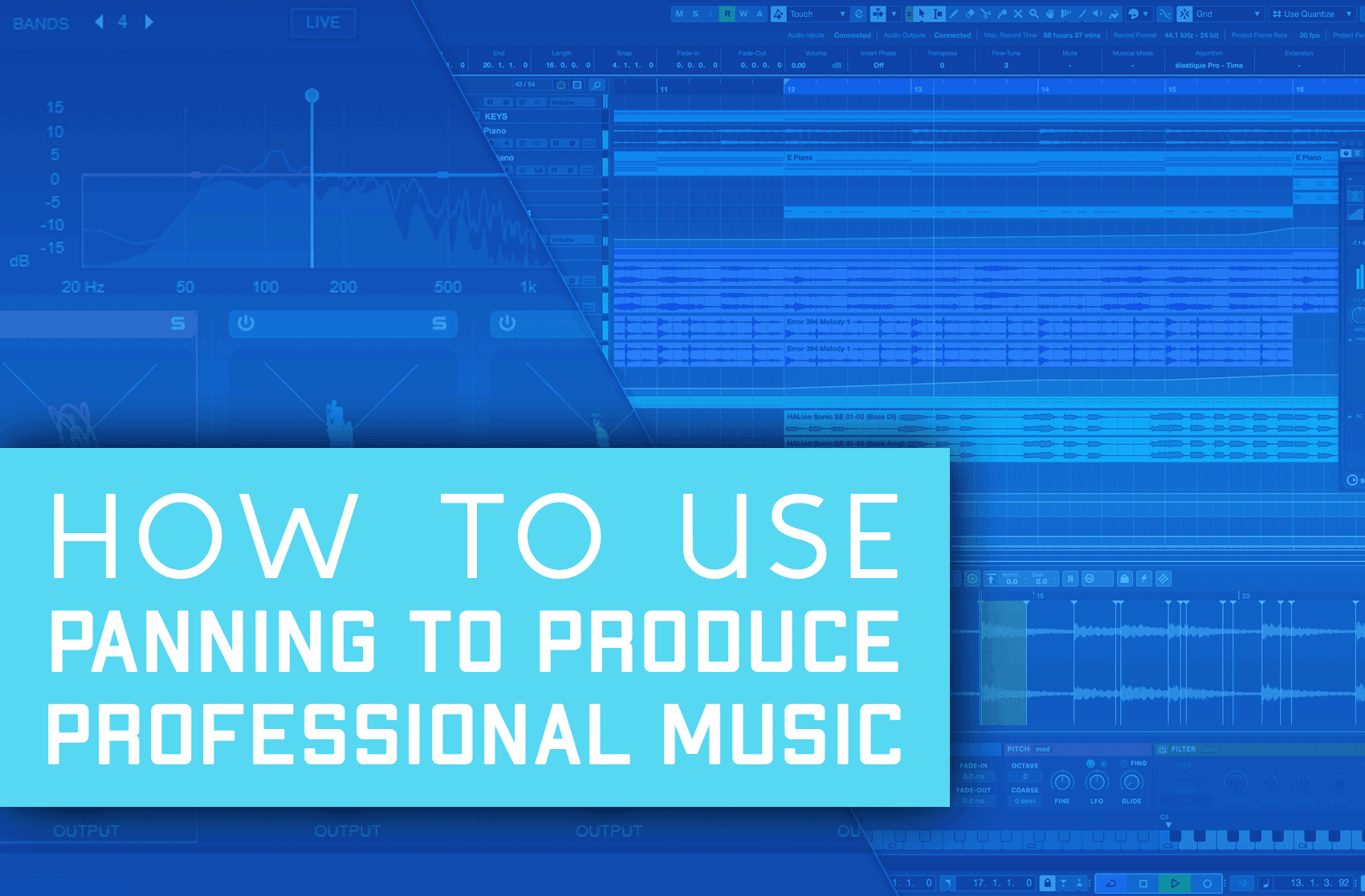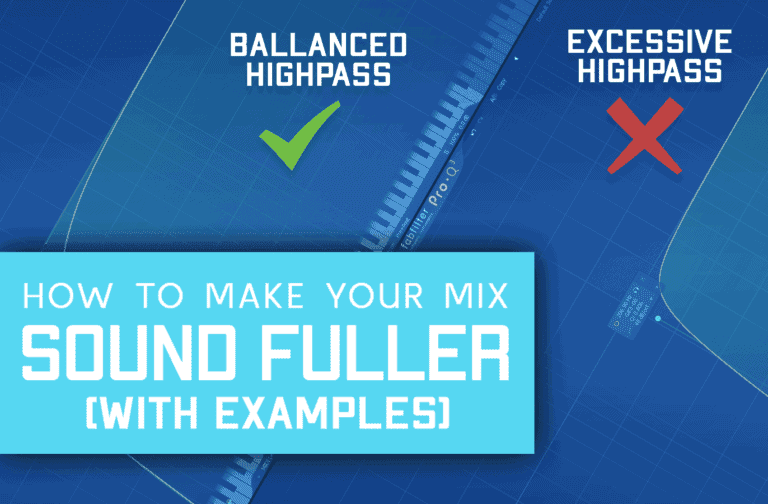Many producers will mix their beats and tracks to perfection, yet something still doesn’t sound right. Despite feeling like the track has been well produced, it still sounds flat and lifeless.
This is probably because they forgot to apply panning to the piece – it’s really important and will bring a whole new dimension to your music.
If you don’t know how to use panning to produce professional music, don’t worry – we’re here to help. Read on to find out about what panning is, why you should use it and how you should apply it to your mixes!
What Is Panning And How Can It Help You?
Panning is essentially the process of applying stereo location to individual sounds within an audio composition. An element can be panned either left, right, or both (mono). Panning is mostly used to add width and make space for every element in a mix.
When you listen to a piece of professional music, you will notice that some sounds are only heard on the left or the right of your headphones or speakers, whereas other sounds can be heard across both or even move gradually across the field.
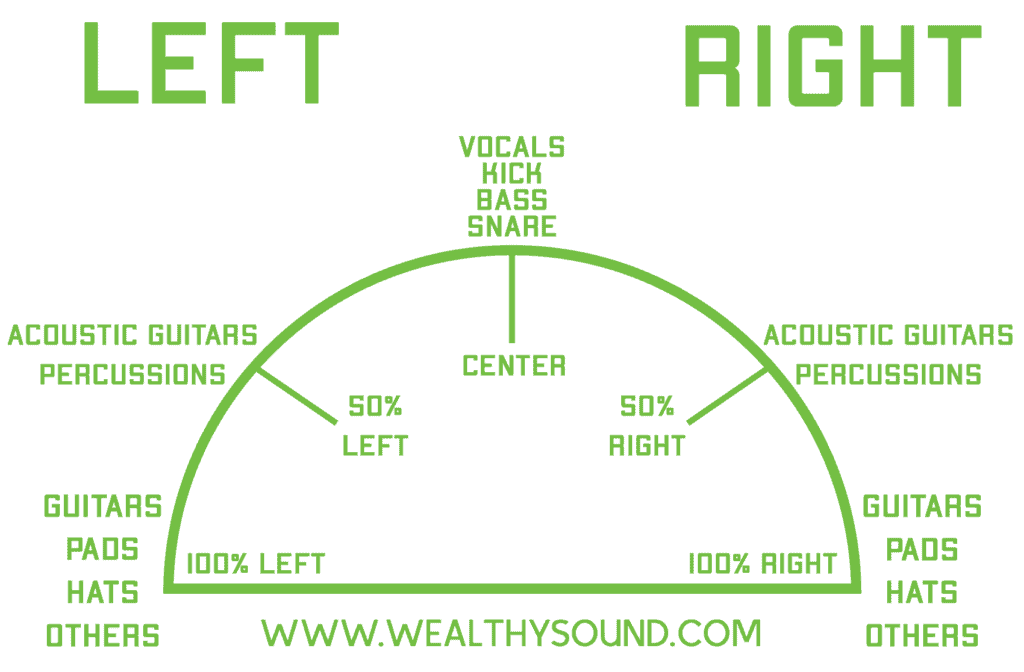
In the early days of music technology, all music was recorded as ‘mono’ which meant that all sounds within a composition could be heard through the same speaker.
However, stereo was discovered in the 1930s and it wasn’t long before music producers realized that this added a huge level of depth to their music.
These days, every DAW out there facilitates panning and it is absolutely essential to produce professional music!
Let’s take a look at how you should pan your tracks to ensure that your music sounds professional and that every sound is given the space it needs to breathe!
When Should You Start Panning Elements In A Track
Every track within your musical arrangement should be panned, even if it is being panned to the center of the stereo field (otherwise known as mono).
You should carefully consider each individual instrument and sound within a composition and how it should be panned.
However, when should you start panning the musical elements of your track? Should it be left until the end much like the mastering process, or should you start doing it as soon as you begin work on a track?
This is a great question – generally speaking, it is never too early to start panning.
In order to make effective decisions in regards to panning, you will need a variety of sounds within your track to ensure that you have a context within which to make these decisions.
Therefore, panning isn’t the first thing you should consider when creating a track. You should first begin by laying out the core elements of your track. Once you have a variety of musical elements, that is when you should begin panning.
You should systematically go through each track and apply the following techniques listed within this article.
Don’t just follow the rules blindly though – listen to the way the panning affects the position of each instrument, and recognize how it sounds within the overall composition.
You should use the ‘solo’ and ‘mute’ controls to isolate tracks as you go to get a better perspective on how this works.
How To Pan Drums Correctly (Mono / Left&Right)
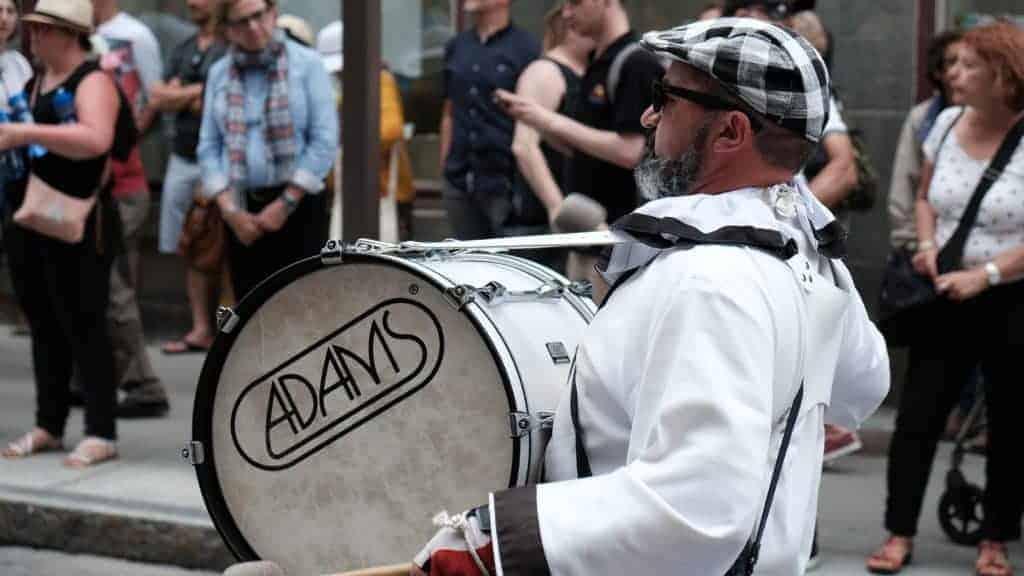
One of the most essential parts of a musical composition that requires panning is the drums.
Think about it – a drum kit or drum machine consists of a wide variety of elements such as the kick drum, hi-hats, and snare, and this provides an excellent opportunity to distribute these elements spacially through panning.
If you played a real drum kit, you wouldn’t hear all of the sounds at the center of your stereo field – drums are placed to the left and the right to provide a stereo experience.
Generally speaking, the bassy elements of your drums should be panned at the center of the stereo field – this will always include your kick drum and often your toms.
However, other elements (particularly those focused on high frequencies) should be panned to the left of the right. Hi-hats and snares will sound best when panned to the right of the stereo field, whereas cymbals will generally sound better towards the left.
As we have already mentioned though, you shouldn’t just follow this advice blindly – experiment with drum panning yourself to find ways of spatializing the individual elements to make them stand out. For example, if you are using multiple different hi-hat sounds within your beat, consider panning each instance differently.
How To Pan Bass Correctly (Mono)
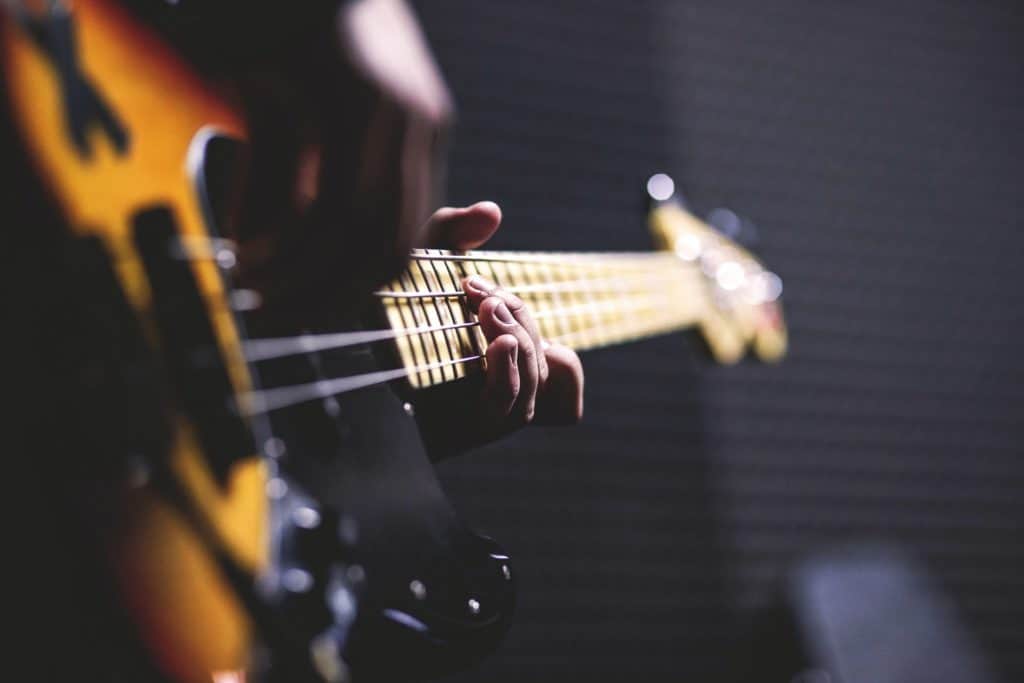
We already mentioned that the kick drum should be panned to the center of the stereo field, and this is due to the low frequencies present.
The monophonic perception of this allows the low frequencies to cover the entire listening field and provide the powerful drive that bass-heavy sounds contribute.
This is very much the same when it comes to bass instruments, whether this is a sub-bass sine wave, a bass synthesizer, or a bass guitar.
These instruments are generally used to provide a rounded and driving musical element that other instruments interact with spacially, and therefore panning it to the center is essential.
If this doesn’t make sense, try panning a bass instrument to the left or the right – you will quickly notice that this sounds really strange.
Low frequencies are very overpowering in comparison to high frequencies, so if you were only to hear this in a single ear then it would sound really bizarre and quickly become uncomfortable.
Always pan bass instruments to the center of the mix – this will ensure that it contributes optimum power to the mix and provides a good backbone for higher frequency elements to work alongside.
How To Pan Electric Guitars Correctly (Stereo / Left&Right)

Electric guitars are beautifully versatile instruments to use in your professional music productions. You can use them to create bass-heavy riffs, high-frequency licks, or soft chord progressions.
Due to the versatility of the instrument, you can use a variety of panning techniques to ensure that they stand out.
Starting with rhythm guitar, it will generally be best to keep this pretty central. This is due to the fact that rhythmic sequences make use of low and bassy guitar strings, providing a driving backbone for the rest of the guitar parts to interact with. Ultimately, this follows the central-bass rule previously mentioned.
However, it’s going to be different with the lead guitar parts. You will want to pan these to the left or the right of your mix, as it will allow licks and solos to stand out and prevent them from getting lost in the rhythm guitar.
It can often be a good idea here to alternate between left and right, especially if you have multiple lead guitar elements to show off.
It also may be worth duplicating your guitar tracks and panning one to the left and one to the right – this can be applied to both lead and rhythm guitar parts. Ultimately, this duel-panning technique will create the illusion that there are two guitars playing the same part, providing a denser and wider characteristic that can help your guitar parts pack more of a punch.
How To Pan Acoustic Guitars Correctly (Stereo)
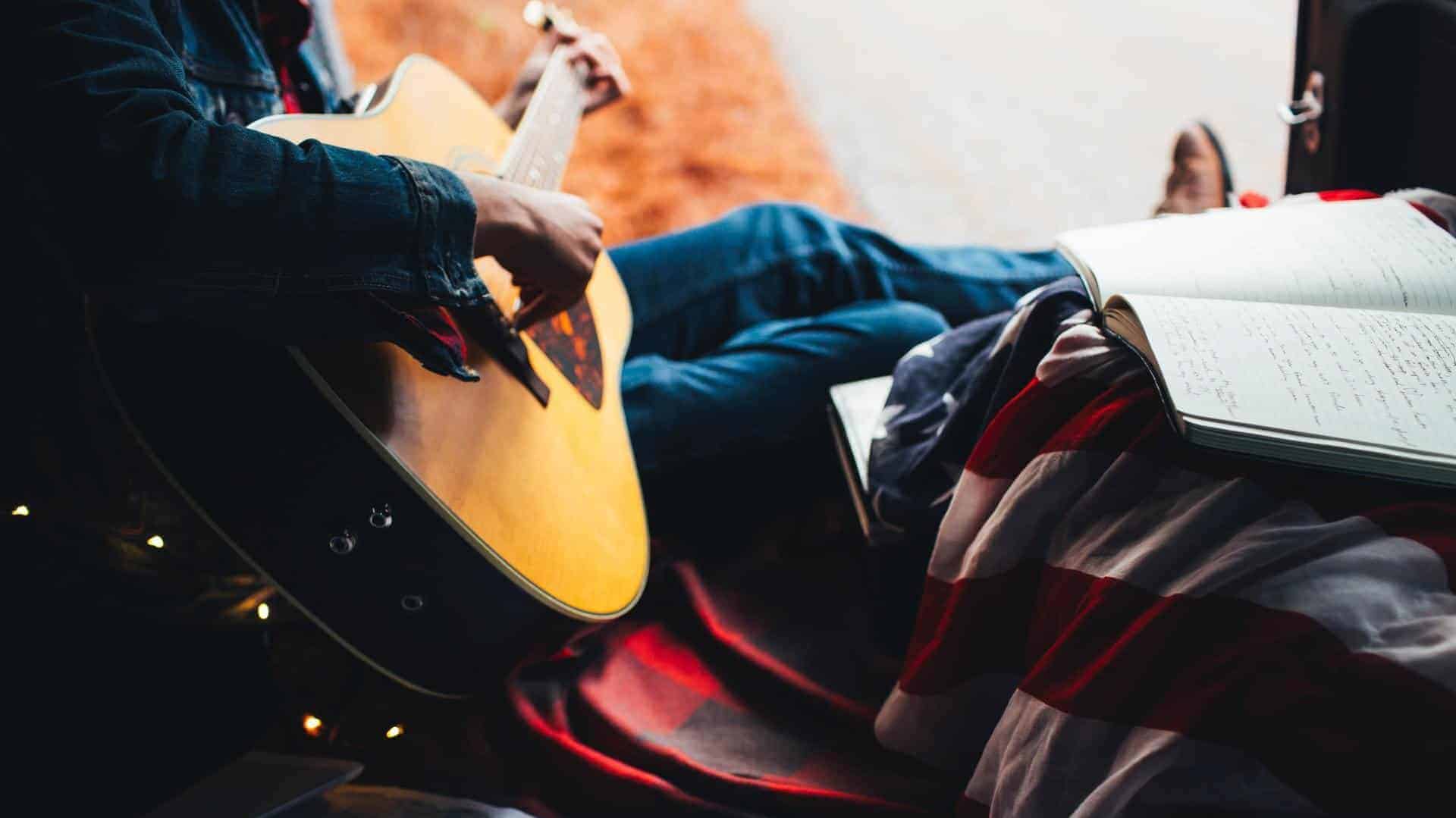
As opposed to the lead and rhythm combo found within electric guitar tracks, acoustic guitars will generally be used to provide chord progressions for the rest of the instruments to be based around.
These guitars may be recorded through a microphone, but they are often recorded directly through a cable in the case of using an electro-acoustic guitar.
It’s going to be a great idea to increase the stereo width of your acoustic guitar parts to sugarcoat them with unison and dense characteristic.
To achieve this, you can use the same technique previously described for electric guitars – track duplication.
Simply take your acoustic guitar track, duplicate it, delay each channel a little bit (10ms-50ms) and pan one to the left and one to the right. This will create an illusion of two guitars playing and is guaranteed to make a track thicker and richer.
It’s also a great alternative to using chorus or ‘unison’ effects as you will have a much greater element of control over the stereo effect.
How To Pan Synths Correctly (Mono / Stereo / Left&Right)
Synthesizers are the electronic keyboard elements that are going to be essential in any modern and professional beat-making. Much like the guitar, it’s a highly versatile instrument that can consist of bass, lead, and ‘pad’ parts.
We’ve already mentioned that bass synths should be panned centrally, so let’s skip that for now. Taking a look at lead synthesis, this should be treated very much like the lead licks and solos produced by an acoustic guitar.
If you are using multiple lead synth parts then you should consider alternating between left and right panning, but you could also consider applying the duplication technique if the lead synth exists as a solo element.
However, don’t forget that panning can be automated – this can be highly effective when considering the stereo position of your synthesizers. This method is particularly effective when it comes to the swells and shimmers of pad synthesizers.
Whilst you won’t want to pan these elements to extreme lefts or rights, you could consider modulating the panning of them from around 25L to 25R in a slow and rhythmic motion.
How To Pan Lead Vocals Correctly (Mono)

Lead vocals are very much like the kick drum, bass, and chordal elements of your musical composition – they use a wide range of low and high frequencies, and form the backbone of your composition.
Due to this, you should generally pan your lead vocals centrally to ensure that they can be heard through both speakers. Trust us – it would sound really strange if the lead vocals found within a chorus were panned to only be heard in the left or right ears.
You could consider duplicating the vocal track and panning them to the left and the right to provide further stereo width, but if you choose to do this then it should be done extremely subtly. We’re talking panning to 5L and 5R, meaning it will be barely noticeable.
How To Pan Background Vocals Correctly (Stereo / Left&Right)

Whilst we already mentioned that lead vocals should be panned to the center of your tracks stereo field, this is not the case for background vocals. This could consist of simple backing vocals that provide stereo width to specific lyrics, or other vocal parts such as ad-libs.
When it comes to background vocals, you should aim to achieve a well-rounded balance between left and right panning.
In the event that you have multiple ad-libs to work with, for example, you should alternate between panning these to the left and the right in order to create a balanced stereo field of detail.
However, not all background vocals will sound good when panned to the left or the right – it may still be worth going for something a bit more central, particularly when it comes to simple backing vocals that compliment the lead vocals.
In this event, consider sticking to a stereo arrangement through the previously mentioned track duplication method.
How To Pan FX Correctly (Stereo / Left&Right)
Finally, let’s discuss panning the FX within your professional music composition.
These elements are massively varied and could consist of an LFO-driven synthesizer, a white-noise riser, amongst a vast variety of other sonic decorations.
It’s generally a good idea to pan these articulations to the hard left or right of your stereo field – this will allow them to stand out from the overall mix and prevent them from being overly obvious or unnoticeable.
These kinds of sounds are often focused around high frequencies, so it will be important to adjust the volume when panning these.
However, not all FX will benefit from this – some examples such as white noise risers that form structural and transitional elements should actually be panned centrally.
This will allow them to interact within the backbone of your track, as opposed to existing as sonic decorations.

